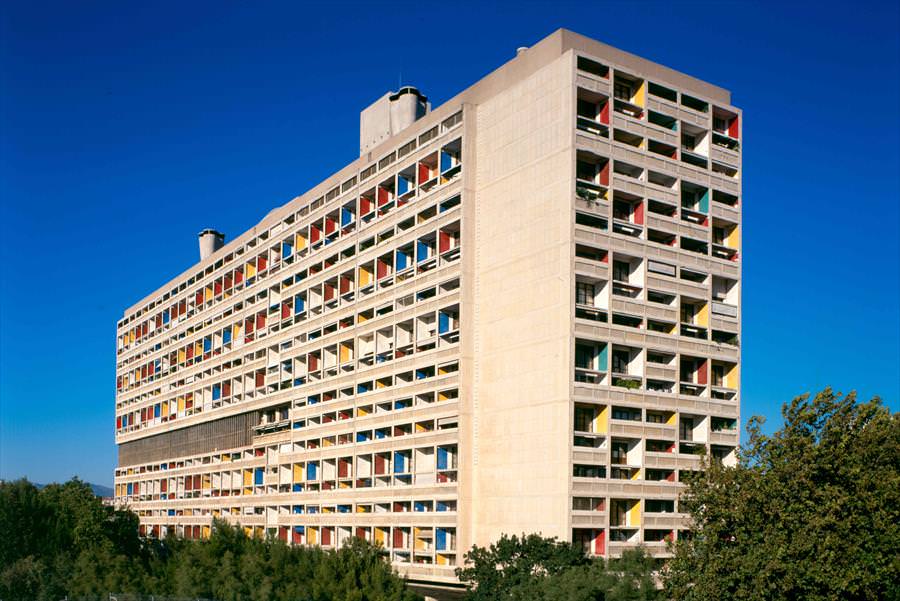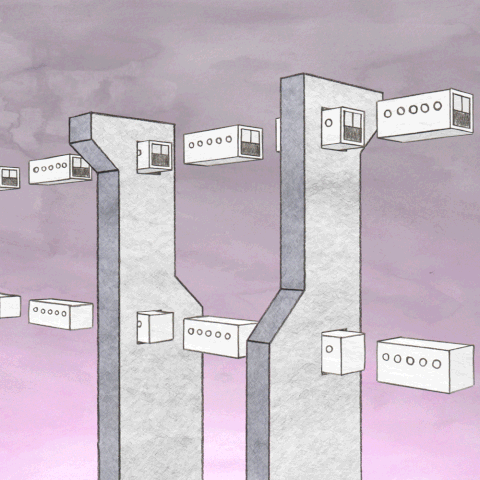Widely-used brutalism originated in 1950’s and 60’s Britain, used by two architects Peter and Alison Smithson, although it was used much earlier in the work of Le Corbusier in the late 40’s with Unité d’Habitation in Marseilles. Brutalism as a term/movement was popularised by architectural historian Reyner Banham in a review of the Smithson’s work, as it described its approach to its structure and services.

Key Characteristics:
- Blocky and heavy appearance
- Simple, graphic lines
- Lack of ornamentation
- Utilitarian feel
- Monocrome palette
- Use of raw, exposed concrete and brick, as well as modern materials such as steel, glass, stone, and gabions
- Rough surfaces
- Small windows
- Modular elements
Brutalism is widely unpopular for being ugly and unappealing to look at. Despite its unpopularity, it grew widespread due to the need to rebuild cheaply after the damage both physical and financial from WWII. It began to fade out in the 80s as architects realised how cold and alienating it looked, the deteriorative properties of concrete (especially in the English climate), and the fact it became a prime target for graffiti. Additionally the style became associated with Soviet-Era totalitarianism, as the USSR embraced brutalism over the Cold War period.
Hohenadel, K. (2022). What Is Brutalism? [online] The Spruce. Available at: https://www.thespruce.com/what-is-brutalism-4796578.https://www.thespruce.com/what-is-brutalism-4796578

“Medicine, law, business, engineering, these are noble pursuits and necessary to sustain life. But poetry, beauty, romance, love, these are what we stay alive for.” – John Keating (Robin Williams), The Dead Poets Society (1989)
Brutalism for PARANOIA
My original concept art had very brutalistic undertones, as I was unconsciously associating it with totalitarianism and surveillance culture, two characteristics of the USSR, which had much of this architectural style. But the more overt the brutalism became, the more boring my setting seemed. I have to admit I’m of the large percentile that doesn’t see the appeal of brutalism. There will still be brutalist undertones, but if I want to draw people in, I’m going to need something else too.

Leave a Reply